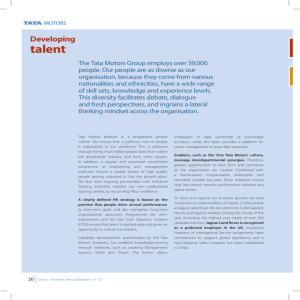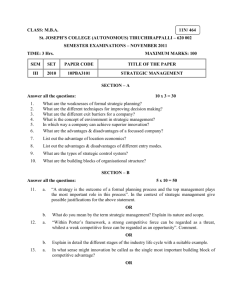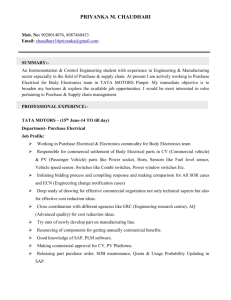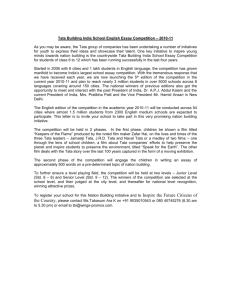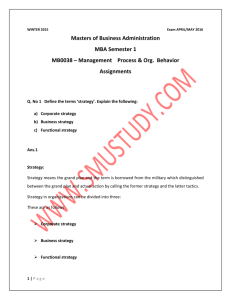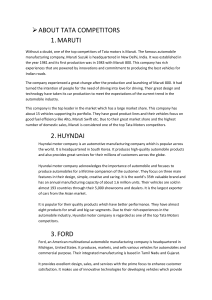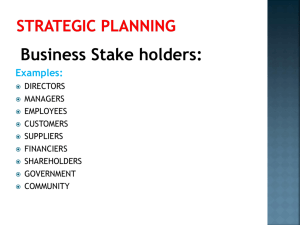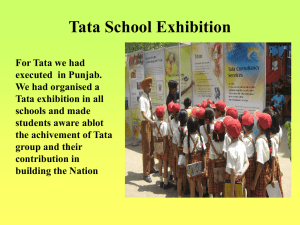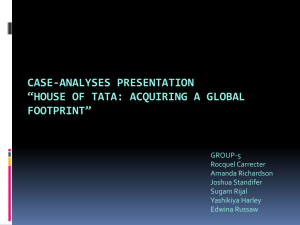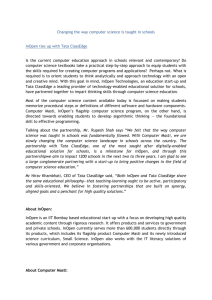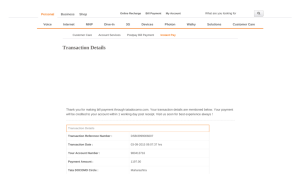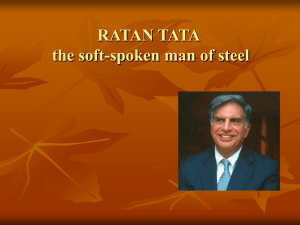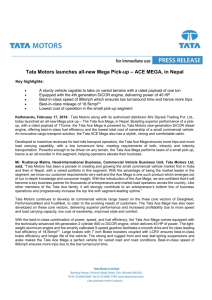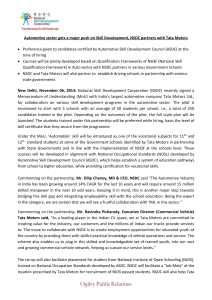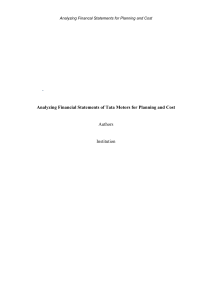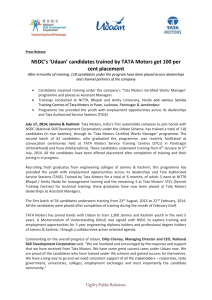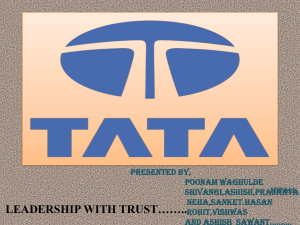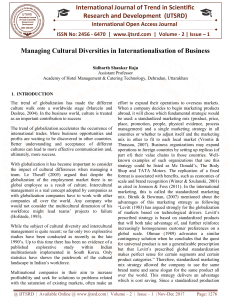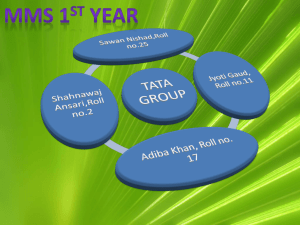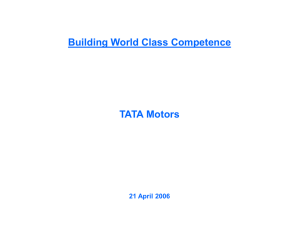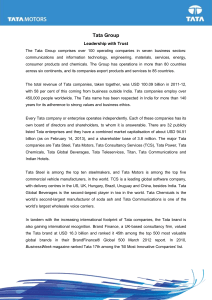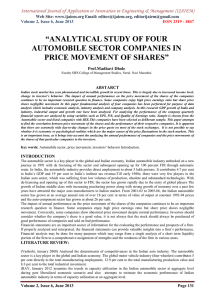TATA_S09
advertisement
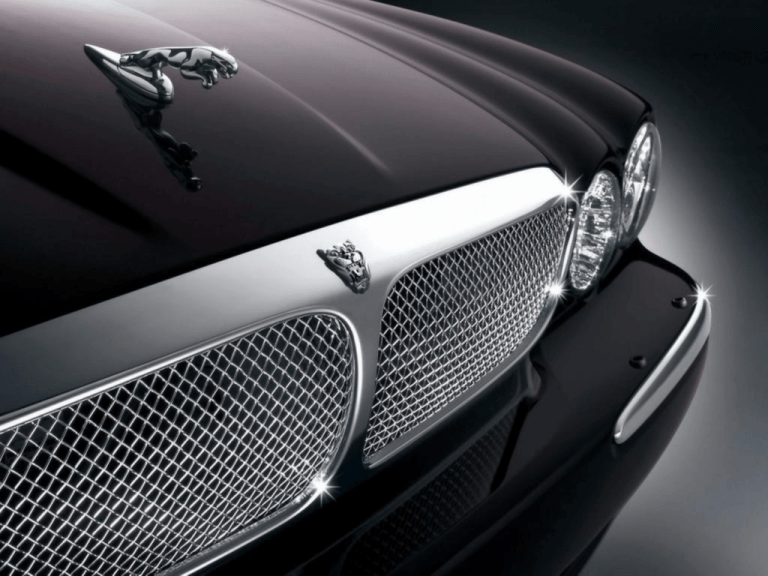
PRESENTED BY: Danielle, Suvdaa, Anton, Tony Agenda • • • • • • History Current Situation & Global Market SWOT Analysis & Industry Analysis Competitor Analysis Recommendations Conclusion History • 1945 Jamshedji Nussarwanji Tata and J. Baker, founded TATA motors in Mumbai, India • Locomotive producer until 1954 • 2004 TATA Motors was listed on the New York Stock Exchange History • 2005 TATA was ranked in the top ten corporations of India • Manufactures passenger cars, commercial cars, including medium and heavy duty hauling trucks, and city busses • 2008 TATA finalized a $2.3 billion deal with Ford to buy out Jaguar and Land Rover TATA NANO TATA NANO • Top speed of 220 kilometers an hour (136.7 MPH) • Full tank range is 150 to 200 kilometers • 0 emission = 0 pollution • Starts at $2,500 Current Situation and Global Market • India’s the most successful automotive company • The world’s second largest bus manufacturer • Fourth largest truck producer on the global market Current Situation and Global Market Current Situation and Global Market • Challenged by the World Economic Crises • Tata's commercial vehicles sales in India fell by 40% at the end of 2008 • Exports fell by 45% in the quarter ending on December 31, 2008 Current Situation and Global Market • Passenger car sales in India slid 14.4%. • TATA provides financial services to its potential customers. • New opportunities in expanding in developing and advanced-economy countries. SWOT Analysis Strengths: • Research and Development Activities • Strong domestic player Weaknesses: • Decline in vehicle sales • Brand Recognition SWOT Analysis Opportunities: • Continue to launch new products • Passenger car market is growing in India • Acquisition of Jaguar and Land Rover brands SWOT Analysis Threats: • Increased competition from foreign and domestic competitors • Government environmental regulations • Economic downfall Industry Analysis History of the Automotive Industry: • 1912 – first electric self-starter introduced by Charles Franklin Kettering • 1913 – Moving assembly lines in mass production – Henry Ford Industry Analysis Future of the Automotive Industry: • New technology • Finding alternative fuels • More efficient automobile designs • Placing new gadgets in vehicles Industry Analysis Global Crisis • Current economic situation – GM filing bankruptcy • Oil prices • Emissions laws Competitor Analysis • Ford • General Motors • Maruti Suzuki India Ford Motor Company • 1903 the Ford Motor Company in Detroit, Michigan • 2007 revenues $172.5 billion • Manufactured 6.553 million automobiles that year • 1914 Ford was the first automobile company to introduce large-scale manufacturing of cars General Motors Corporation • • • • Founded in 1908 by William C. Durant Employs over 252,000 people Sold 18.35 million automobiles in 2008 Has other fuel options E85 fuel, electric vehicle, Hybrid • 2010 General Motors hopes to have a hydrogen fuel powered line of vehicles Maruti Suzuki India Limited • Maruti Suzuki India was founded in 1981, in Gurgaon, Haryana, India • 2005 revenues exceeded $2.5 billion • Employ 6,903 Moped Industry • Experienced steady growth in India over the last couple years. • Cheap costs Short Term Recommendations • Cash flow • Innovative and productive ideas • Develop more vendors worldwide Long Term Recommendations • Produce luxury cars • Increasing joint ventures • Replacement of increasing fuel price Conclusion • 1945 Jamshedji Nussarwanji Tata and J. Baker founded TATA Motors • 1954 formed a joint venture with DaimlerBenz AG of Germany • 2008 TATA finalized a deal with Ford to buy out Jaguar and Land Rover Thank You! Any Questions?
